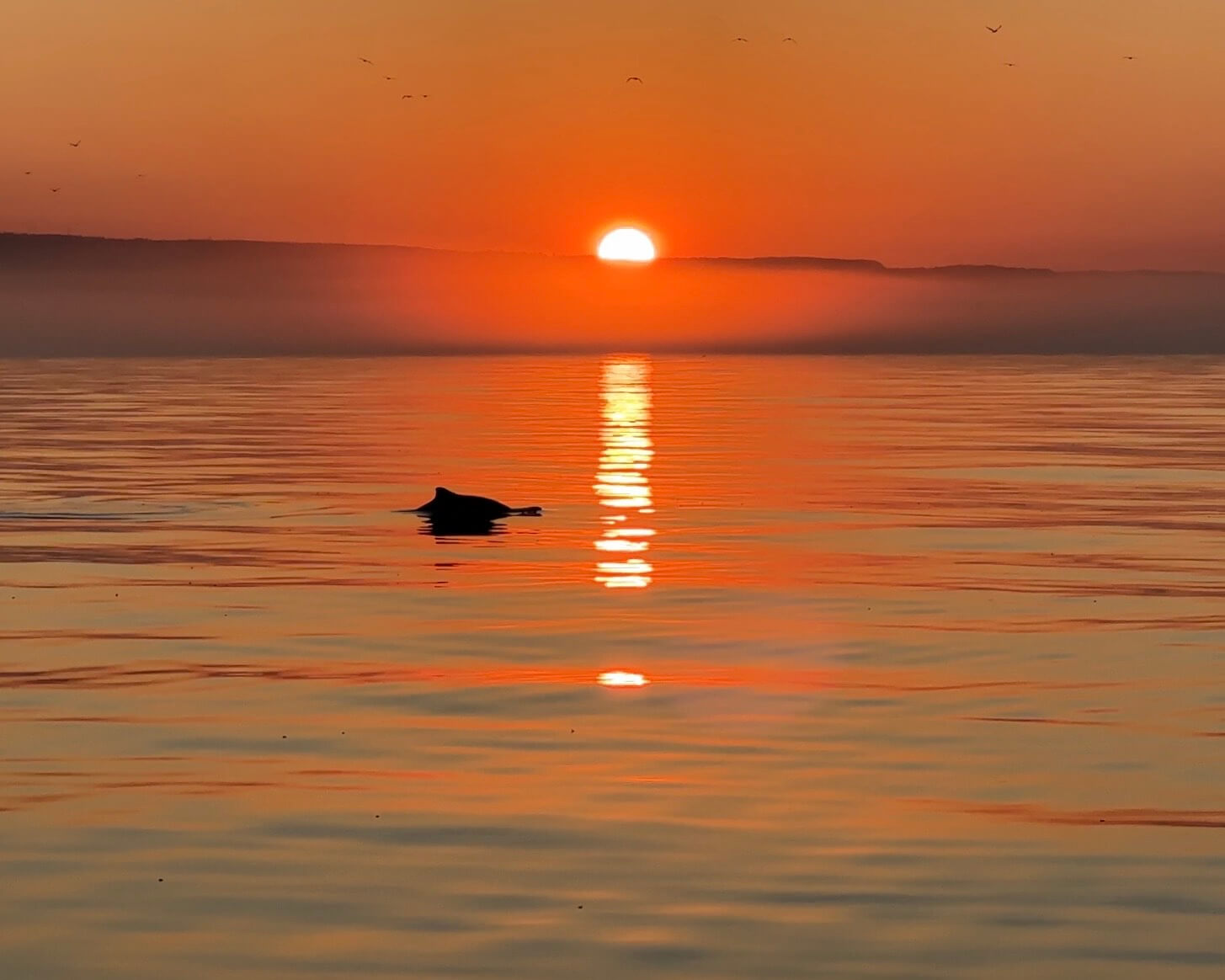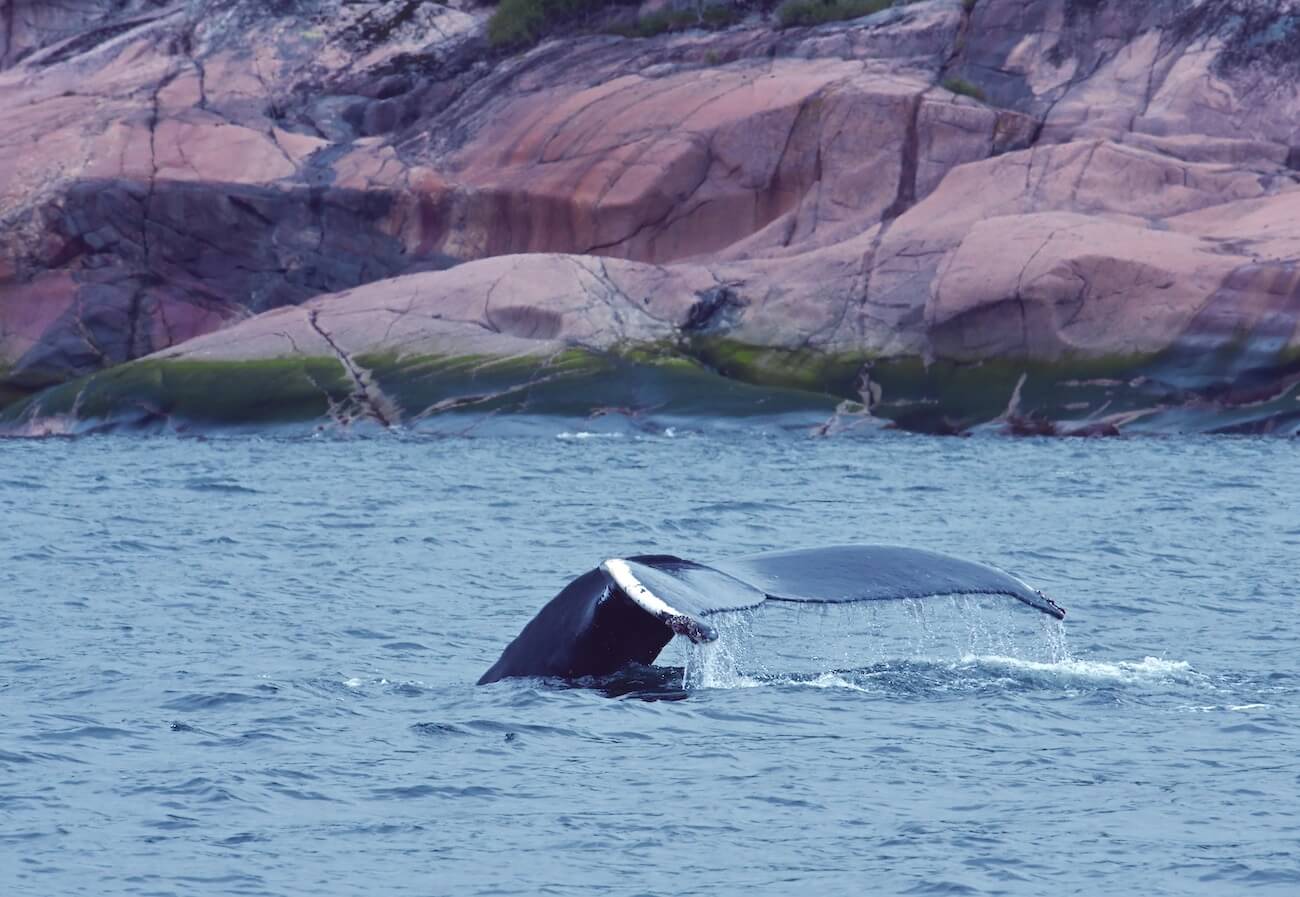“Can killer whales be seen in Gaspé Bay?” asks a kayaker out at sea with a group near Grande-Grave, off the Gaspé Peninsula. Maybe! Killer whales are occasional visitors to the Gulf, and very rarely to the Estuary (the most recent documented sighting dates back to 2003). Killer whales, a.k.a. orcas, have a dorsal fin that can measure up to 2 metres high. These gregarious animals are generally observed in groups, but in the Atlantic, lone individuals are sometimes seen. This summer, a group of killer whales was filmed near Blanc-Sablon in the Basse-Côte-Nord region.
As surprising as it might seem at first glance, a surface feeding minke whale can be mistaken for a killer whale. Indeed, during some hunting techniques, a minke whale can swim on its side, leaving its caudal fin sticking halfway out of the water, straight and high like a killer whale fin.
In Sainte-Anne-des-Monts, one local observer reports spotting a few backs – probably those of minke whales – at the edge of the open sea. As the season draws to an end, he notes: “I didn’t seen any large movements or any blue whales this summer, despite having spent a lot of time scanning the sea. We noticed this summer that once it is quite dark, we begin to hear spouts, sometimes very loud ones… as if the larger whales are approaching the shore only at night. This statement echoes that of many captains in the Saguenay-St. Lawrence Marine Park. This past summer, some whales appeared to rest at the surface longer than usual during the day, suggesting that they were very active during the night. This could be related to the vertical migrations of some prey, which rise to the surface at dusk, making the whales more “audible” to local residents at night, and leaving the whales’ bellies satisfied during the day.
In Sainte-Marguerite Bay in Sept-Îles, two blue whales are identified on October 19. One of them shows its tail before undertaking a long dive. Why do some animals show their tail and others do not? One of the assumptions is related to how much flexibility the animal has in its lower back. The same day, two humpback whales are observed: H823 and the descendant of Tracks who, ironically, has a large scar inherited from a run-in with a ship.
In Baie-de-Sept-Îles, 6 or 7 harbour porpoises and five minke whales are observed. Minke whales are also seen near Tadoussac.
On October 23, in the golden autumn light, our collaborator Renaud Pintiaux photographs a humpback swimming amongst a group of fin whales in the Saguenay-St. Lawrence Marine Park.
At least one humpback whale is observed from the deck of a house in Franquelin. As temperatures drop, whale spouts show greater contrast as the animals expel warm air from their lungs. The humpback shows its tail and even leaps into the air multiple times before crashing to the surface, splashing water in every direction.
Winged migration continues
In Tadoussac, while team members of the Group for Research and Education on Marine Mammals are busy taking their vessels out of the water, other research continues, notably on birds. The Tadoussac Bird Observatory (OOT) continues its censusing and banding activities as part of its migration monitoring programs. On October 21, 425 raptors, 3,080 American robins, 1016 pine grosbeaks and 483 common redpolls were tallied. At the banding station, 241 birds were captured, including 17 pine siskins, 35 common redpolls and 55 pine grosbeaks.





